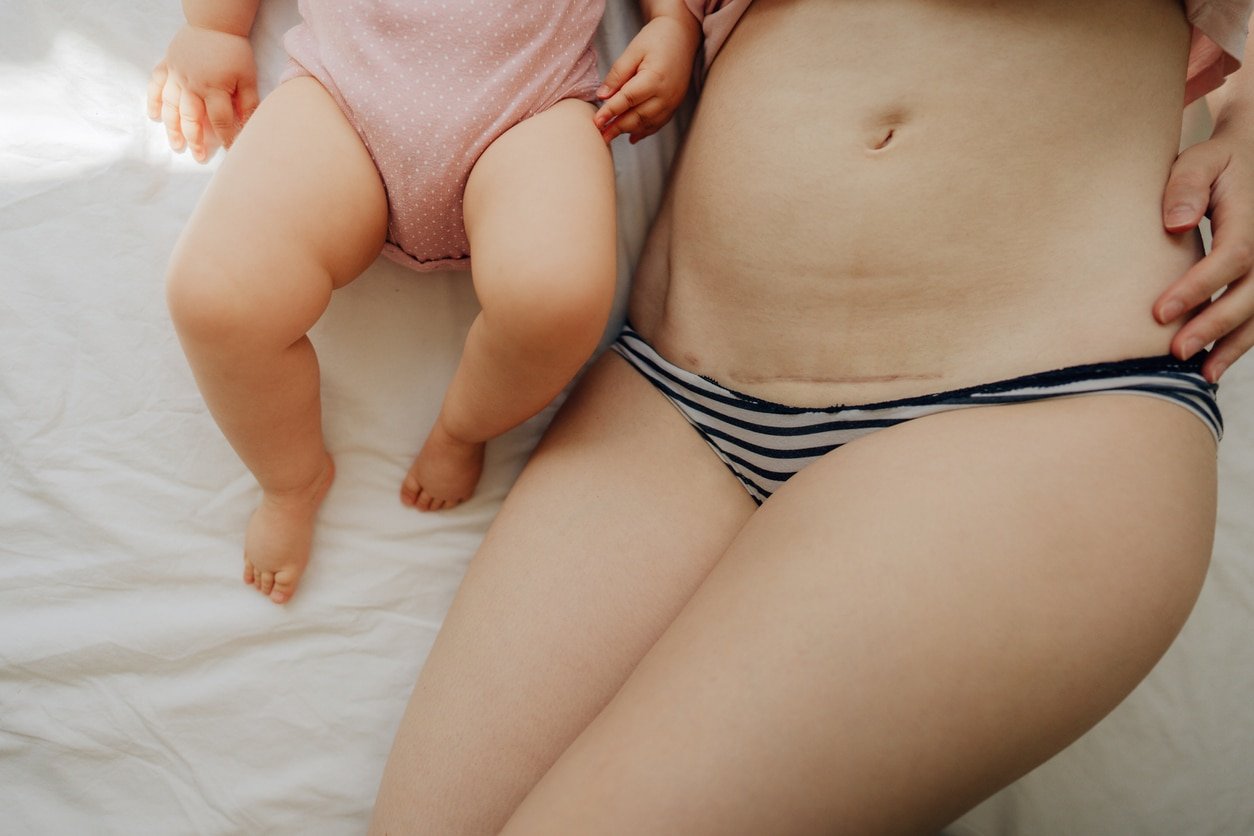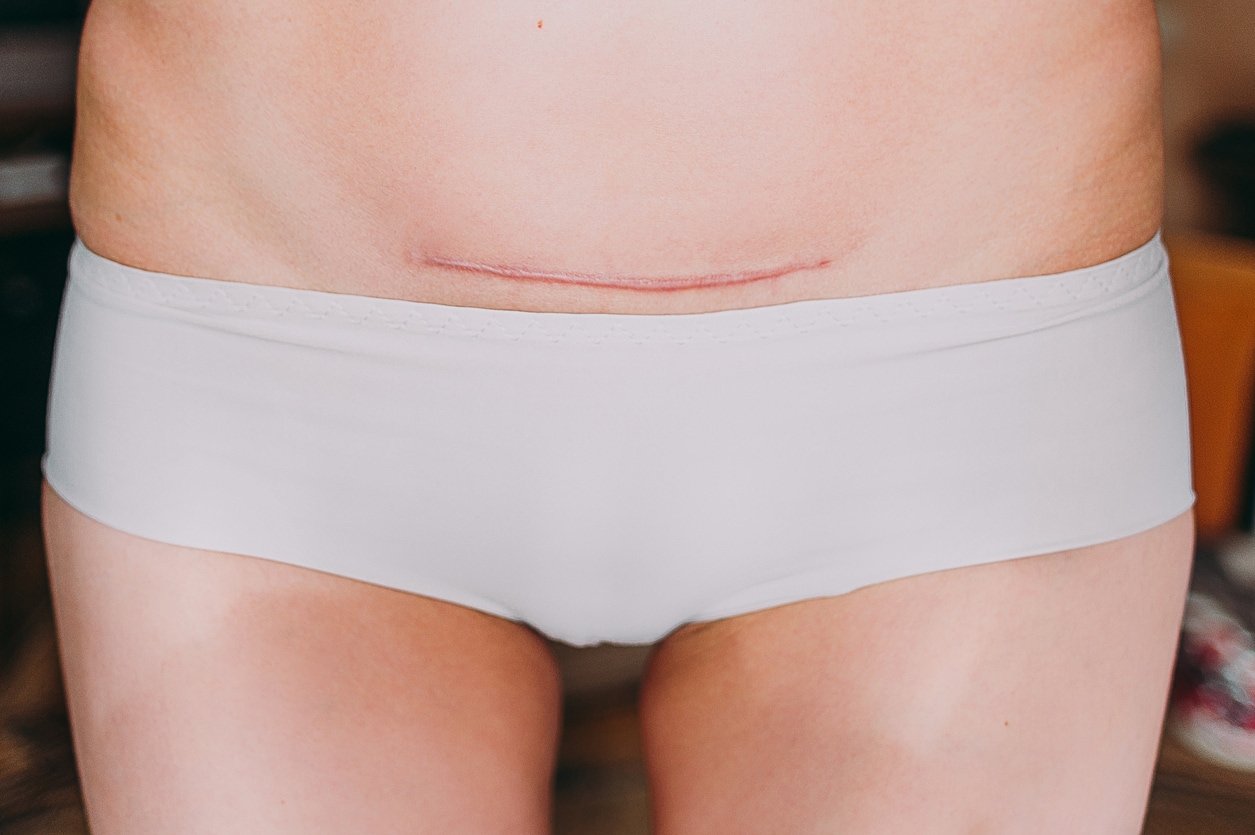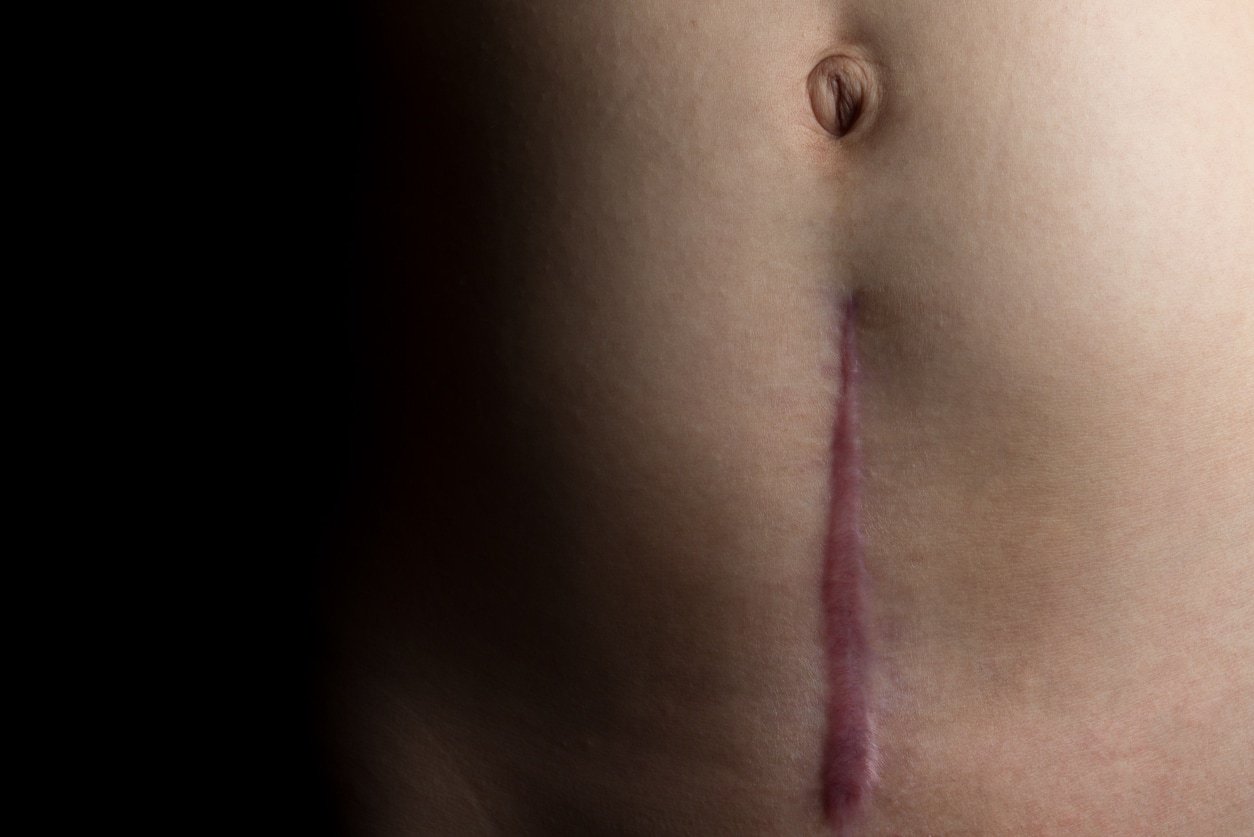
While having a C-section is not typically one’s first choice, sometimes it is the safest way to get your baby to earthside. And getting your beautiful baby here safely is the utmost priority. Because a C-section is a major surgery, it leaves behind an incision — a representation of your little miracle. Most uncomplicated C-sections involve a small incision above the pubic bone. There are ways you can care for and look after your C-section scar to encourage healthy healing.1
Types of C-Section Scars and Incisions
There are two types of C-section incisions: low transverse and classical. If your provider needs to get your baby out urgently, or you’ve had a previous C-section, a classical incision may be required. Your doctor will make an incision into your abdomen and another in your uterus to get your baby out. The incisions are typically 4 inches to 6 inches long to accommodate your baby’s head and shoulders.2
Low Transverse Incision

Low transverse C-section incisions are horizontal or side-to-side incisions just above the pubic bone along the bikini line.2
Classical Incision

Classical C-section incisions are vertical in the abdomen between the pubic bone and the naval.2
Stitches After a C-Section
Your doctor will often close incisions with dissolvable stitches and place strips of medical tape called Steri-Strips along the incision line. After your delivery, your incision will also be dressed with a medical bandage. This bandage stays on for 24-48 hours, but the Steri-Strips will stay on for up to a week.3
If your doctor couldn’t use stitches to close your incision, they may use staples. Unlike dissolvable stitches, staples must be removed by your medical team after a few days. Another option that may be used is surgical glue. The glue will hold your incision together and will peel off on its own as the incision heals.1
Caring for Your C-Section Scar
Taking good care of your C-section incision is essential for encouraging proper healing. Properly caring for your C-section scar will help prevent injury and infection.
- To keep the area clean, shower and wash the area daily. Let warm water and mild soap wash over the incision site to do this. Be careful not to scrub the area. Let the water and soap run over the area is enough to cleanse it.3
- After you’ve washed the incision, carefully pat the area dry with a clean towel.3
- Allow Steri-Strips to stay in place for up to a week. Try not to remove them unless it’s been 10 or more days.3
- Avoid swimming and soaking in a hot tub or bathtub until your doctor clears you. This is typically after 2-4 weeks.3
- Take it slow and take caution when changing positions. You don’t want to strain or stretch your C-section scar site. Try to be mindful of when you’re bending and twisting. You can hug a pillow to your incision when coughing, sneezing, or laughing.4
- Follow your provider’s instructions regarding lifting and exercise. Typically, you shouldn’t be lifting anything heavier than 10 pounds or doing vigorous exercise for the first six weeks. Light walking is okay and even recommended. This is the time to slow down, let your body heal, and enjoy your sweet baby.4
- Wear loose-fitting clothes. Tight clothing can rub and irritate the C-section scar site. This is your cue to get comfy and whip out those sweatpants and pajama bottoms.
- Take pain medications as prescribed. Your incision will be most painful in the first three days but can remain sore for up to six weeks. Your doctor will prescribe you a pain medication regimen. Staying on top of your pain medications will help with your C-section recovery and help you to stay comfortable as you heal.4
Eat Healthy
Your C-section scar will be most sensitive and puffy in the first two weeks. Every scar heals differently, but there are things you can do to encourage proper healing. Taking good care of yourself can help aid the healing process. It’s challenging when you’re busy caring for your beautiful new baby around the clock but don’t forget to take care of yourself, too. Accept help when you can, and don’t be afraid to reach out to your partner, family, and friends during this time.
Everyone heals differently, and C-section scars are the same. Some people are more prone to getting thicker scars, while others heal relatively well with no issues. Here are some things you can do that may help improve scar tissue. Always check with your provider before trying any treatments on your C-section scar.
- Stay hydrated and eat nutritious foods to help fuel the body with what it needs to decrease inflammation and scar tissue. Eating enough fiber will also prevent constipation.2
- Avoid putting creams or gels on your scar without speaking with your provider first. Some gels and creams can irritate the C-section scar further.
- Keep your scar out of the sun. The UV rays can cause the scar to darken and discolor.5
- Avoid picking and itching the incision as it heals. Your incision may feel numb, tingly, or itchy while it heals but try your best not to disturb it. This could cause more scar tissue to form.5
What to Look for With Your C-Section Scar
When caring for your incision, there are signs to look for that could indicate a possible infection or complication. If you have any concerns, contact your provider right away. If an infection is present, your provider may have to prescribe antibiotics or investigate the infection further.
Signs of infection or complication:3
- A fever of 100.4 degrees Fahrenheit
- Redness, swelling, warmth, or pus at the incision site.
- Worsening pain in the incision site or abdomen
- If your incision breaks open or separates
A C-section sometimes is the safest way for your baby to be born. Your C-section scar from this major surgery is your battle scar and represents your little one’s arrival. C-section scars can heal well with proper care, and these tips can help. However, contact your provider immediately if you’re concerned about how yours is healing.
from Baby Chick https://ift.tt/LpxsFNO
via IFTTT


0 Comments
Please ,
Don't enter span link ...